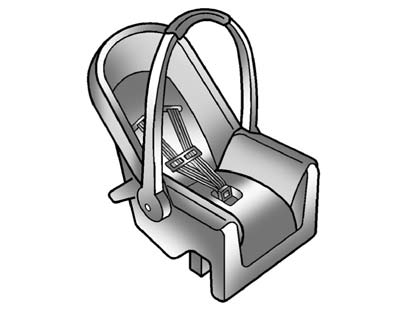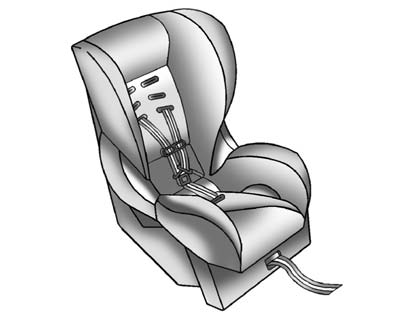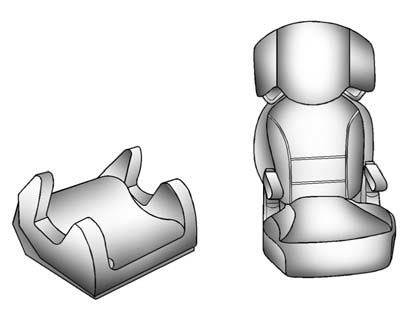Child Restraint Systems
 " width=409 height=331
id="_x0000_i1238" src="images/books/1183/2/index.81.gif" border=0>
" width=409 height=331
id="_x0000_i1238" src="images/books/1183/2/index.81.gif" border=0>
(A) Rear-Facing Infant Seat
A rear-facing infant seat (A) provides restraint with the seating surface against the back of the infant.
The harness system holds the infant in place and, in a crash, acts to keep the infant positioned in the restraint.
 " width=409 height=331
id="_x0000_i1239" src="images/books/1183/2/index.82.gif" border=0>
" width=409 height=331
id="_x0000_i1239" src="images/books/1183/2/index.82.gif" border=0>
(B) Forward-Facing Child Sea
A forward-facing child seat (B) provides restraint for the child's body with the harness.
 " width=409 height=331
id="_x0000_i1240" src="images/books/1183/2/index.83.gif" border=0>
" width=409 height=331
id="_x0000_i1240" src="images/books/1183/2/index.83.gif" border=0>
(C) Booster Seats
A booster seat (C) is a child restraint designed to improve the fit of the vehicle's safety belt system.
A booster seat can also help a child to see out the window.
See also:
Control Buttons
The buttons used to control the MEM player are:
MEM/CD/AUX: Press to select the MEM player.
SEEK/ SEEK: Press to select tracks or to fast
forward or rewind within a track.
INFO: Press to dis ...
Driving for Better Fuel Economy
Driving habits can affect fuel mileage. Here are some driving tips to get
the best fuel economy possible.
- Avoid fast starts and accelerate smoothly.
- Brake gradually and avoid abrupt stops.
- ...
CALIBRATING DRIVE IN
CIRCLES
This message displays when
calibrating the compass. Drive the
vehicle in circles at less than 8 km/h
(5 mph) to complete the calibration.
See Compass for more
information. ...






